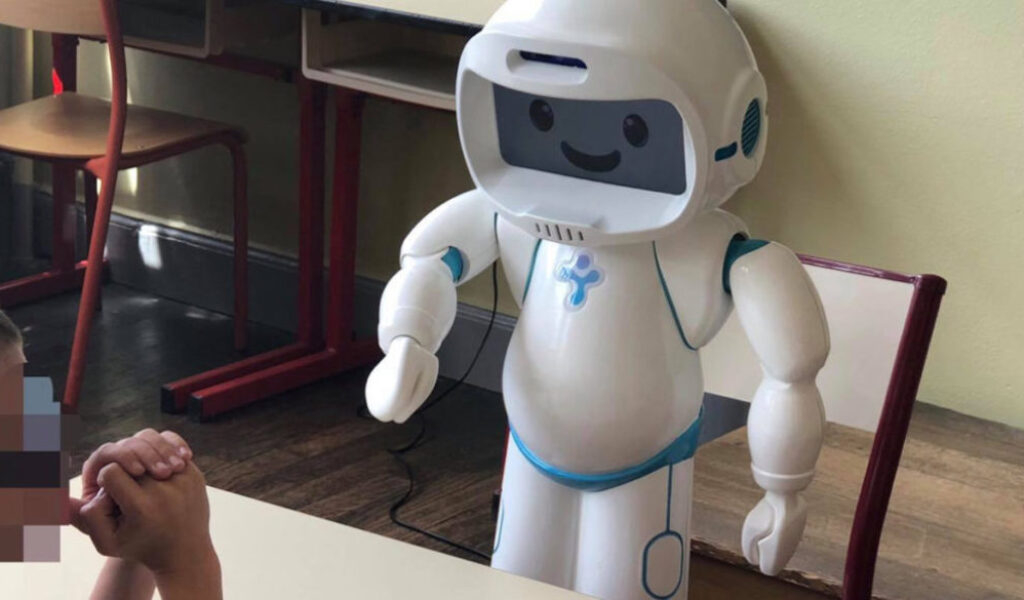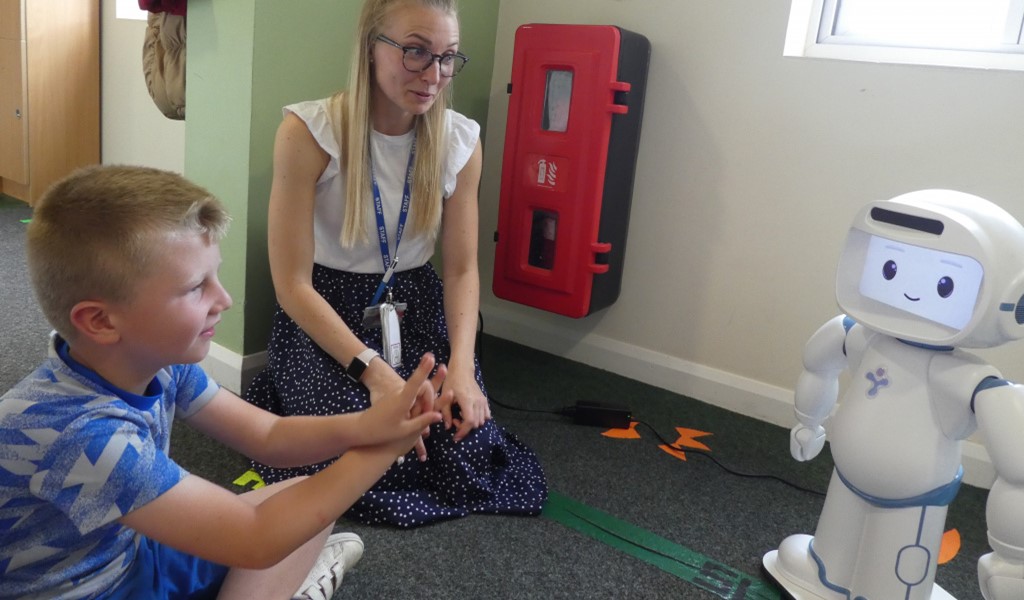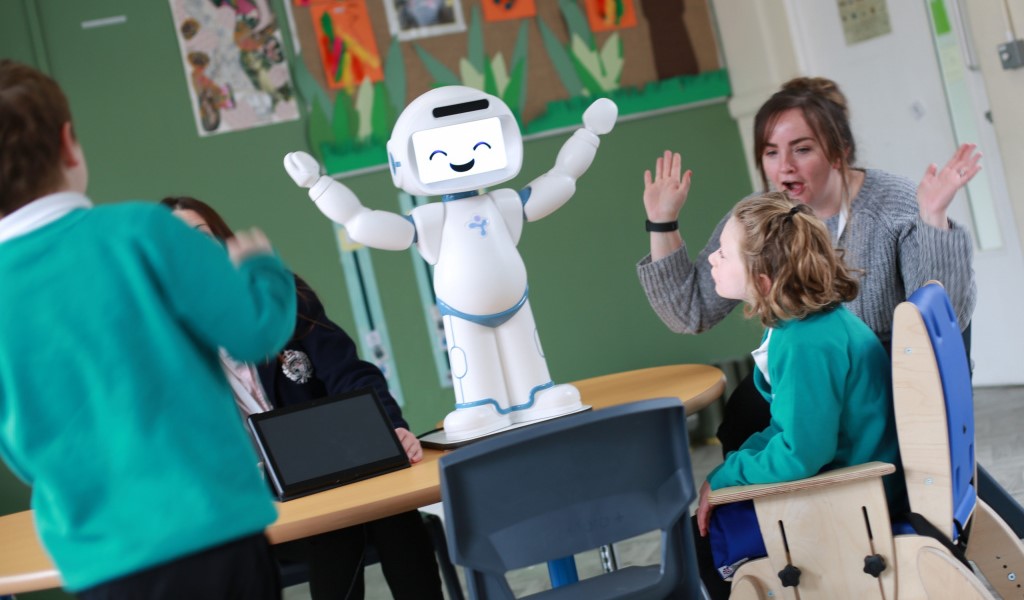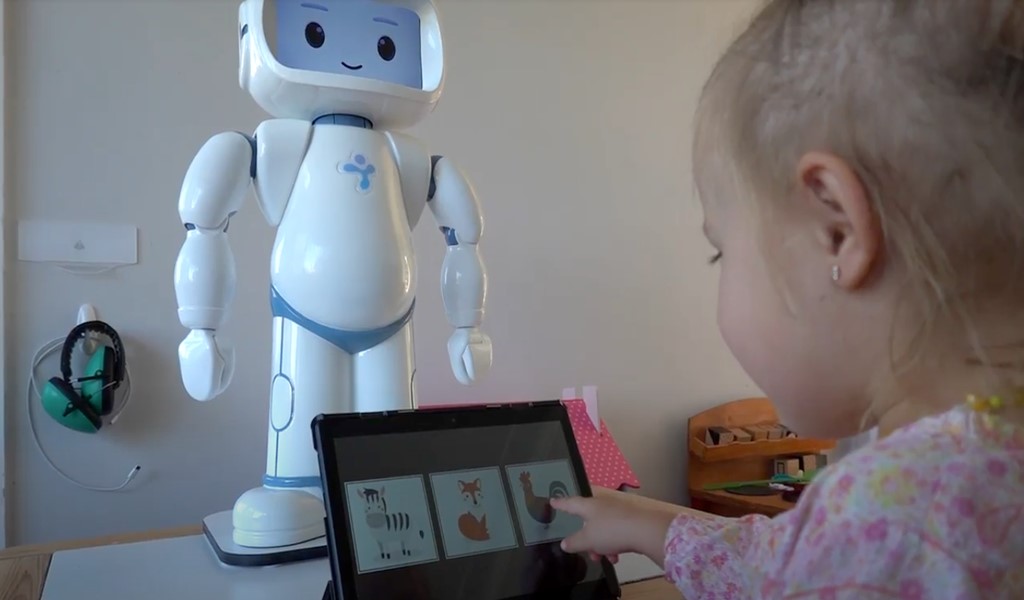Joint attention or shared attention is the shared focus of two individuals on an object. It is observed when one individual diverts the attention of the other to an object by eye-gaze, pointing, gesture, sound or verbal indication.
It is usually developed long before children are able to express their wills, both verbally or by any other non-verbal means. Joint attention allows the child to learn from others and share enjoyment with them.
According to the neurodevelopmental milestones reached in childhood, infants demonstrate joint attention ranging in complexity starting as soon as 2 months of age:
- In 2 months, infants can take turns with looks, noises and mouth movements.
- In 6 months, they can follow and divert their attention to the gaze direction of others
- In 8 months, they can point to objects to attract attention or to request something.
- In 9 months, they can demonstrate social referencing, which entails looking at an object, then diverting their gaze to a person and then looking back at the object thereby expecting the person to share their gaze toward that object.
- In 12-14 months, they can point to an object and look back at a person. In this age, they understand the meaningful use of none-verbal communication such as gaze and pointing.
Table of Content
Joint Attention In Children With Autism:
Children with autism spectrum disorder (ASD), often display delayed or absent joint attention development. This is evident when the child fails to track the objects moved in front of them or does not direct their gaze toward an object when it is either shown to them or pointed to. Moreover, children with autism often do not attempt to point to an item to engage an adult or play partner.
Joint attention is an important milestone in social development as it demonstrates that the child is not only interested in objects but also in people. Given its critical role in social and language development, children should practice and master joint attention before being taught any other form of verbal or non-verbal communication
One of the best ways to hone joint attention is through playing games that (i) incorporate gestures and sounds that can catch the child’s attention and (ii) demonstrate the meaningful use of non-verbal communication signals, such as pointing.
Practical Games To Increase Joint Attention:
1.Play games that incite anticipation:
Playing games such as peekaboo provide a great opportunity to prompt the child to look at you and receive immediate reinforcement in the game. To play this game, put the child in a sitting position in front of you and then cover your face with your hands or with a scarf. Then uncover your face when the child looks at you and make a funny sound or a loud laugh. This engaging game is very effective in attracting the child’s attention and developing joint attention. You can also cover your child’s face with their own hands instead and play the same game.
Another interesting game to teach joint attention to children with autism involves hiding an object or toy in a bag, shaking the bag or otherwise signaling it to the child, and then asking the child to guess what is inside. This evokes curiosity, anticipation and increases the probability of your child displaying joint attention.
2. Playing games including moving objects:
You can play with a toy that your child likes, such as a car. You first wait for the child to look at the toy, then exclaim: Do you want the car? Look!. You then move the car back and forth, making the relevant sound effects to maintain their gaze on the toy. After a while, stop moving the car until the child looks at you and then restart the game.
3. Reading books with images:
Another great activity to elicit joint attention is reading books. For example, you can use a book with animal images and show the images to your child, by saying: Look! A Cat! Once the child looks at the image, you can make the animal sound to redirect his attention to you. You can also ask your child to find the images in the book. For example, you can say: Find the cat! When your child finds the cat, you say: Wow! A Cat! Meow Meow!
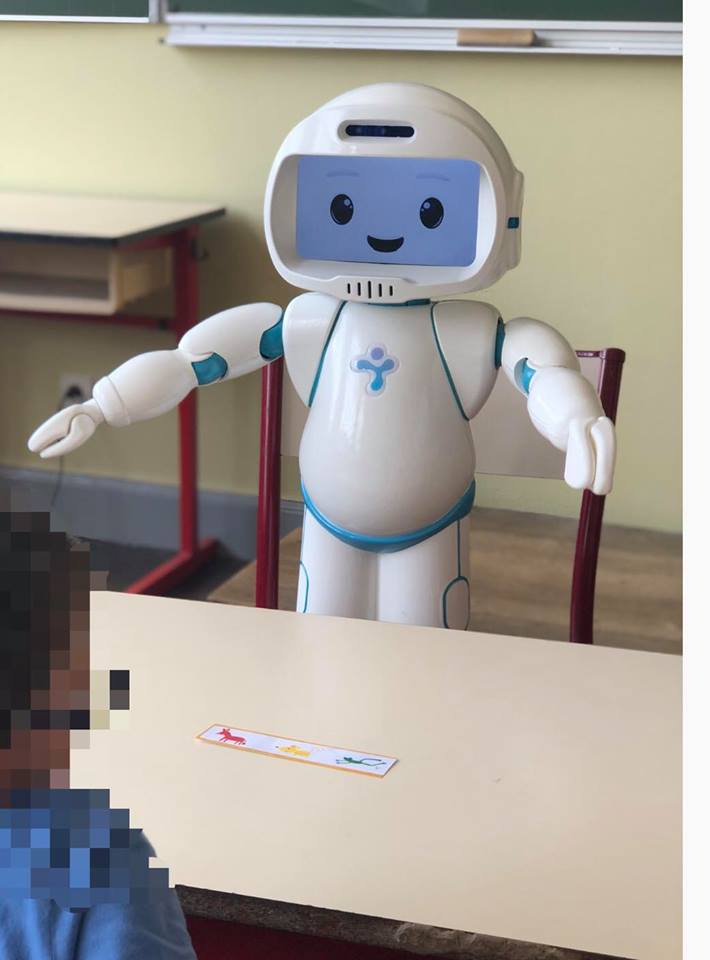
QTrobot using animal games and storytelling to teach joint attention to learners with ASD
4. Showing novel objects or events outdoors:
When outdoors, try to point to novel objects that may interest your child. When your child looks at the objects, try to attract their attention back to yourself by saying: Look! A Police car! Or, Look! A dog! This way, you not only enhance joint attention, but you can also help your child learn new vocabulary. In addition, your child will learn how to use key gestures necessary for asking about novel objects in the future.
5. Play cooperative games:
Games that require turn taking, such as boardgames or building towers with building blocks, are great for teaching joint attention to children with autism. Then prompt and encourage the child to pay attention to you while you are taking your turn. You can also say: Your turn! and point to your child to teach turn taking while also practising joint attention.
Using A Robot To Teach Join Attention To Children With Autism
Early and effective interventions are necessary to address social impairments associated with Autism Spectrum Disorder (ASD). Furthermore, social communication intervention is most effective when the children show sustained engagement and can readily respond to cued feedback. Given the time-consuming nature of social communication intervention and challenging nature of engaging learners to social activities, robots present a viable tool for enhancing skills such as joint attention in children with ASD.
There is ample scientific literature pointing to the efficacy of humanoid robots for social skill training. A study conducted by a group of researchers in Luxembourg showed that children are more engaged by robots during training sessions as compared to human, and display comparably fewer stereotypical and disruptive behaviors.
This was corroborated by many other studies that showed that robots can provide a salient object or mediator of joint attention (Robins et al, 2004; Diehl et al., 2012). One study in particular tested this hypothesis by administering joint attention prompts via humanoid robots to a group of children. They found that after four sessions the children improved their ability to orient to prompts administered by these robots and displayed stronger attention toward the robot over time, highlighting the benefit of robotic systems for training joint attention (Warren et al., 2013).
Another study revealed that children with ASD were more attentive when interacting with the robot, compared to a human, and showed enhanced gaze transition (Cao et al., 2018). These studies are examples of compelling evidence pointing to the efficacy of robotic interventions in joint attention training.
QTrobot Teaching Joint Attention To Children With Autism
By increasing the attention and engagement of learners and by using a variety of activities, QTrobot supports the development of joint attention in learners with autism.
Furthermore, to increase the chance of generalization of learnt skills to other scenarios and to the interaction with a human partner, as well as ensuring the maintenance of the skill, QTrobot incorporates the joint attention in to several units including units for supporting the receptive and expressive language development, and units developed for improving cognitive skills.
To learn more about activities related to teaching joint attention and social skills, check QTrobot Social Skills Curriculum as well as QTrobot Early Stage Development Curriculum .
